Abstract
1. In the unanaesthetized cat, an injection of 0·75 mg of morphine into a lateral cerebral ventricle produced strong hyperglycaemia; on intravenous injection, 10 to 30 times larger doses were required. Other effects produced with both injections were shivering, pupillary dilatation, opening of the eyes, miaowing, periods of excitation, and analgesia. Between the periods of excitation the cat did not react to objects moving in front of its eyes and it had a vacant stare.
2. Noradrenaline, adrenaline, and 5-hydroxytryptamine (5-HT) injected intraventricularly (250 μg, twice) depressed the hyperglycaemia due to intraventricular morphine, and noradrenaline also depressed the hyperglycaemia due to intravenous morphine. Adrenaline produced the strongest and 5-HT the weakest depression. 5-HT did not depress the other effects of morphine, but the catecholamines depressed most of them; only analgesia and the vacant stare appeared to be unaffected.
3. Reserpine injected intraventricularly (0·5 mg, twice) greatly accentuated the hyperglycaemia as well as the other effects produced by intraventricular morphine, but pupillary dilatation and opening of the eyes no longer occurred; the protrusion of the nictitating membranes produced by the reserpine persisted.
4. Pentobarbitone sodium injected intraperitoneally in an anaesthetizing dose practically abolished the morphine hyperglycaemia, but injected intraventricularly in a dose of a few milligrammes, it had a two fold effect: depression followed by enhancement of the morphine hyperglycaemia. The enhancement may be due to sensitization of the effect of the adrenaline released by morphine, since adrenaline hyperglycaemia was enhanced as well.
5. Morphine did not seem to act on structures in the walls of either the lateral or third ventricle when producing its hyperglycaemic effect on intraventricular injection. The action may therefore be on more caudally situated parts of the neuro-axis, on the central grey, on structures in the floor of the fourth ventricle or of the lateral recesses, or even on structures near the ventral surface of the brain stem.
Full text
PDF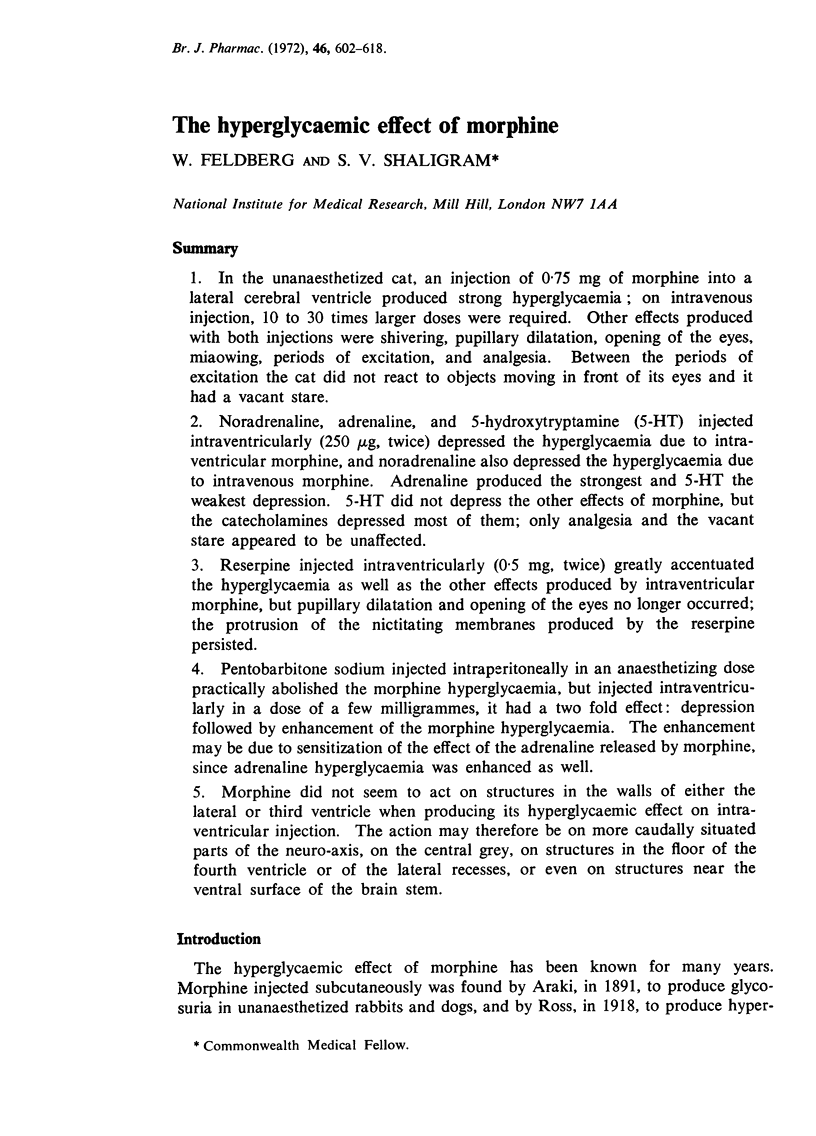
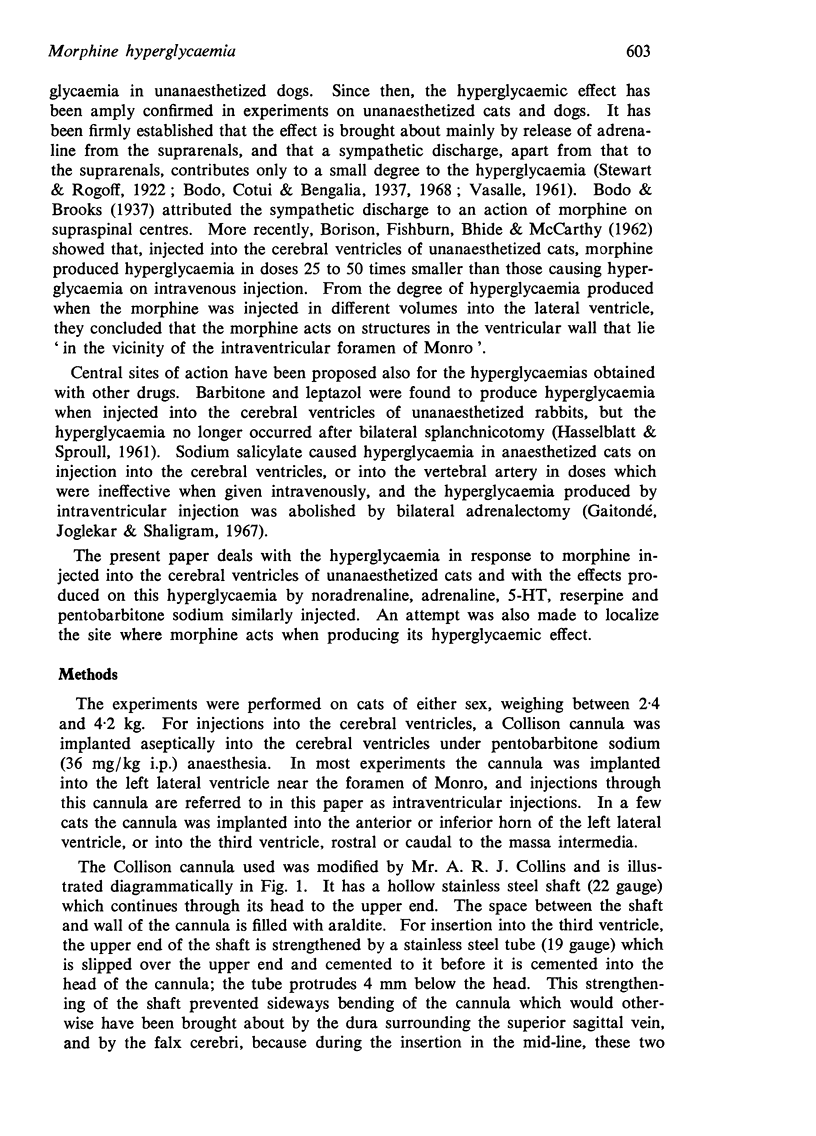
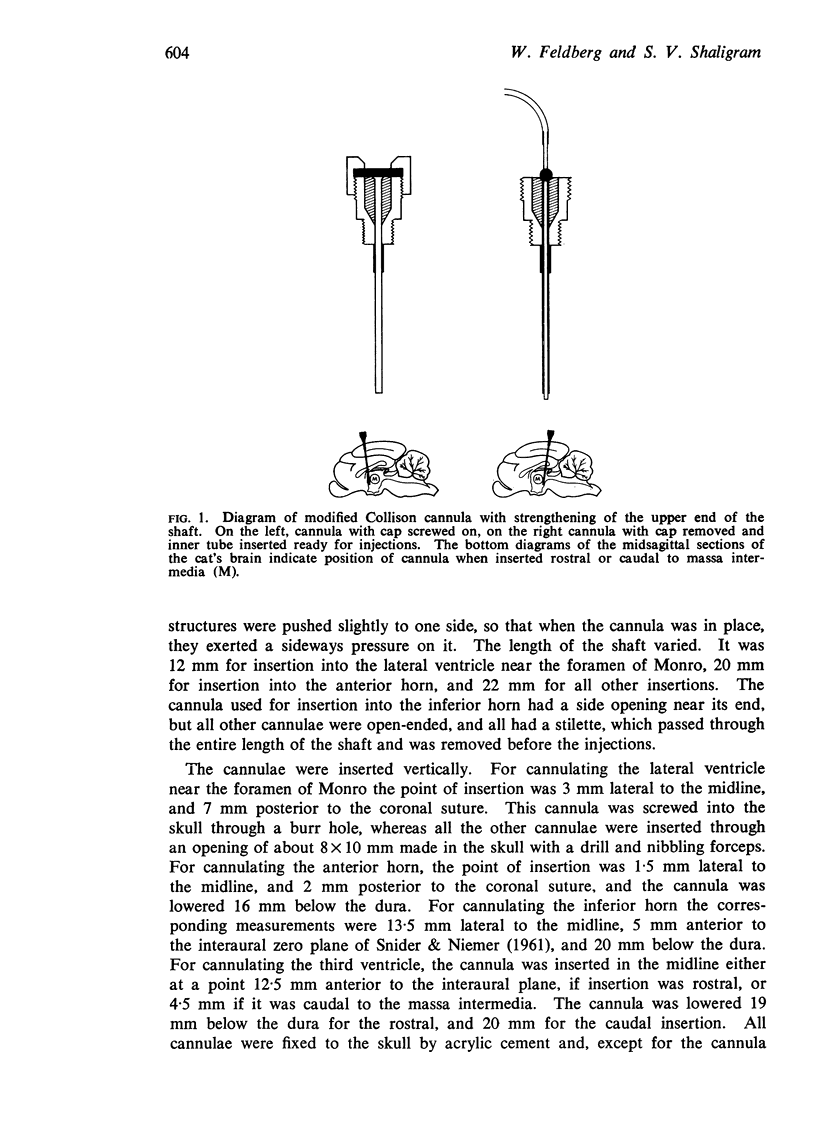

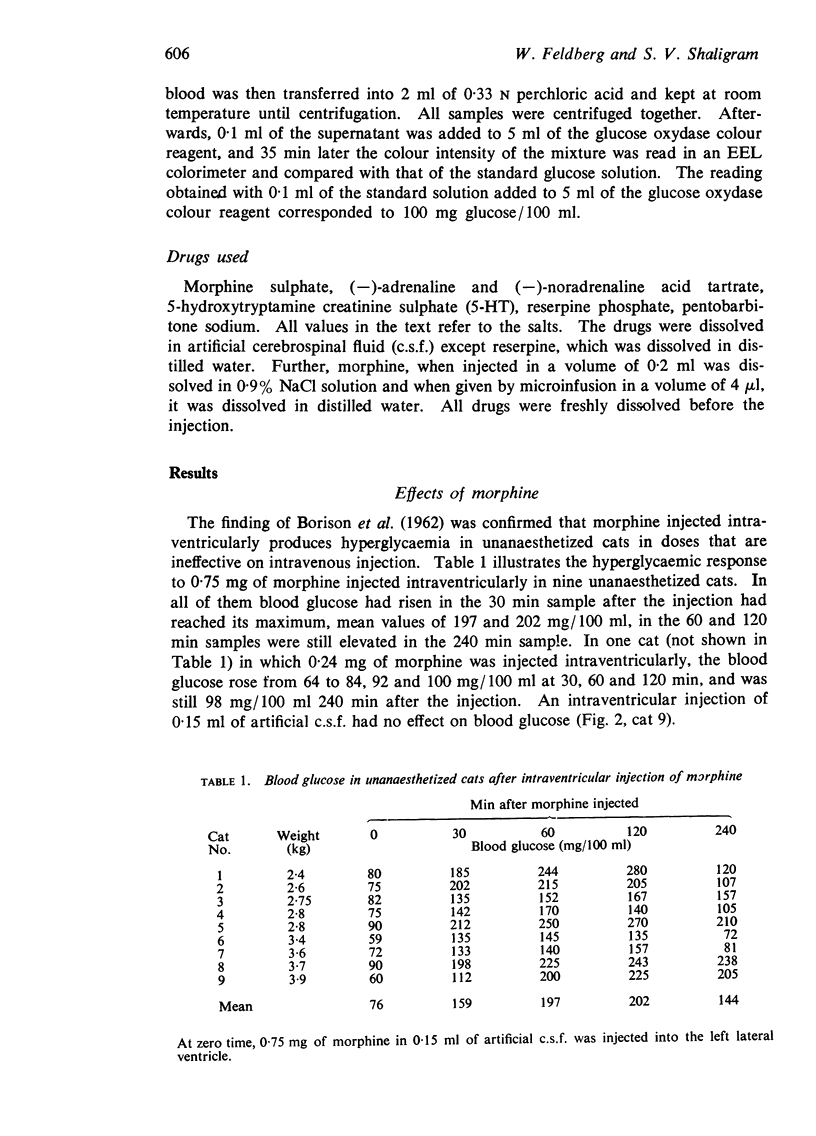
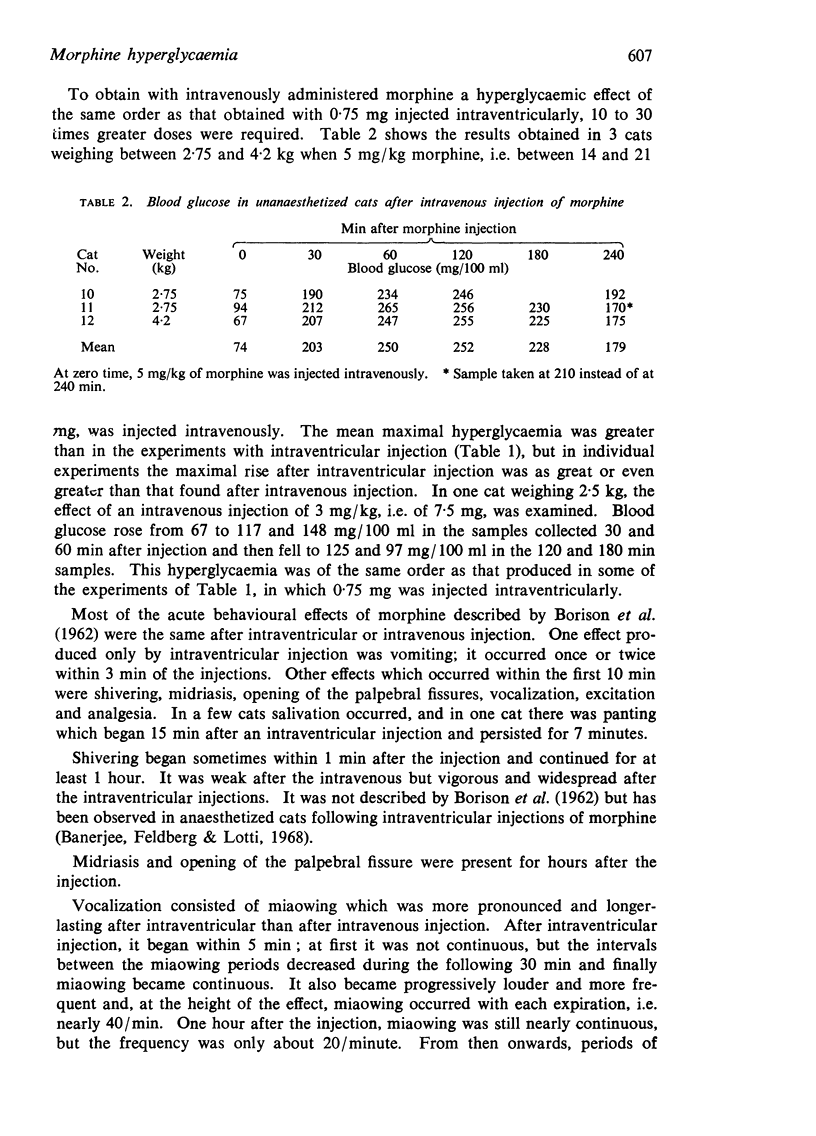
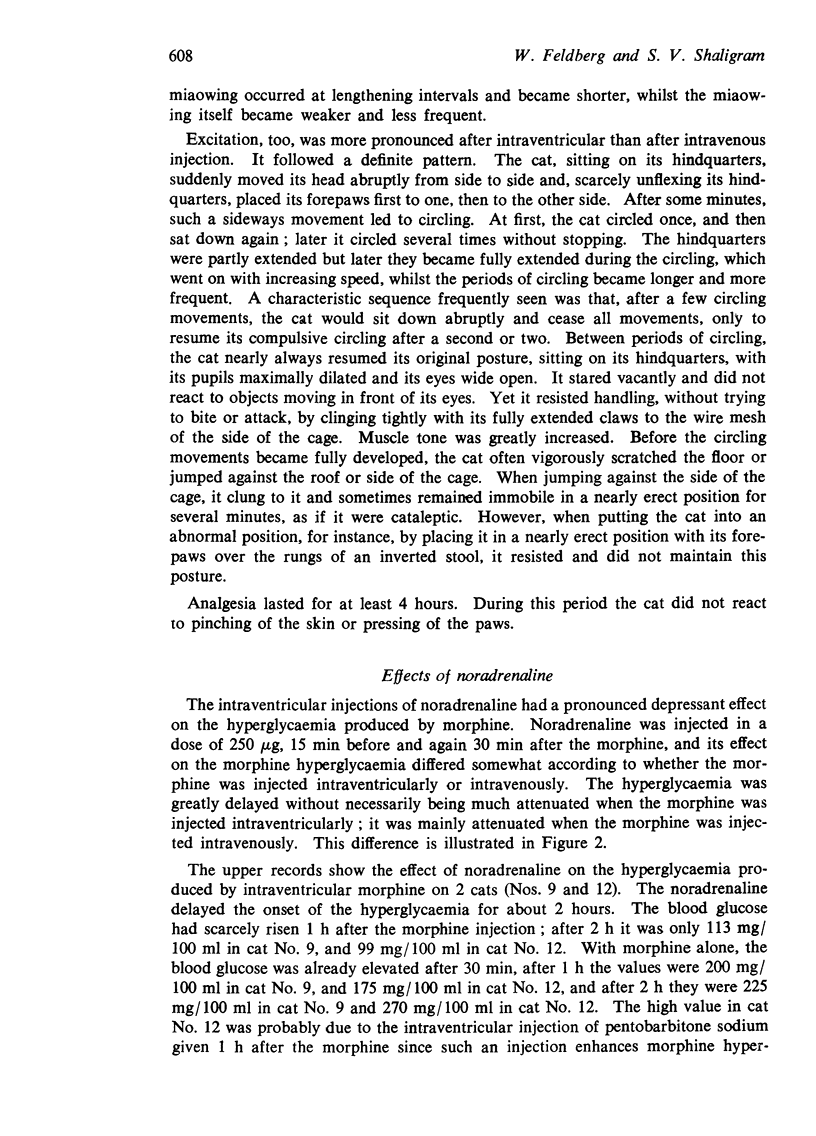
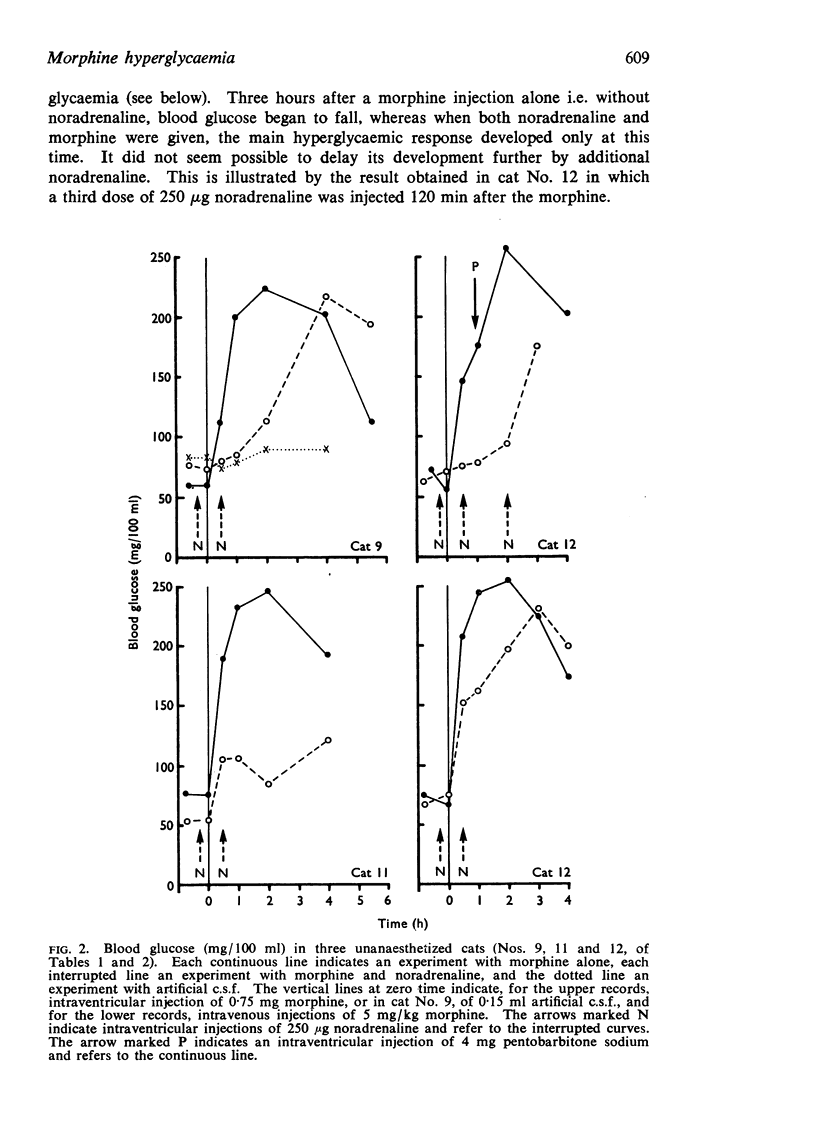

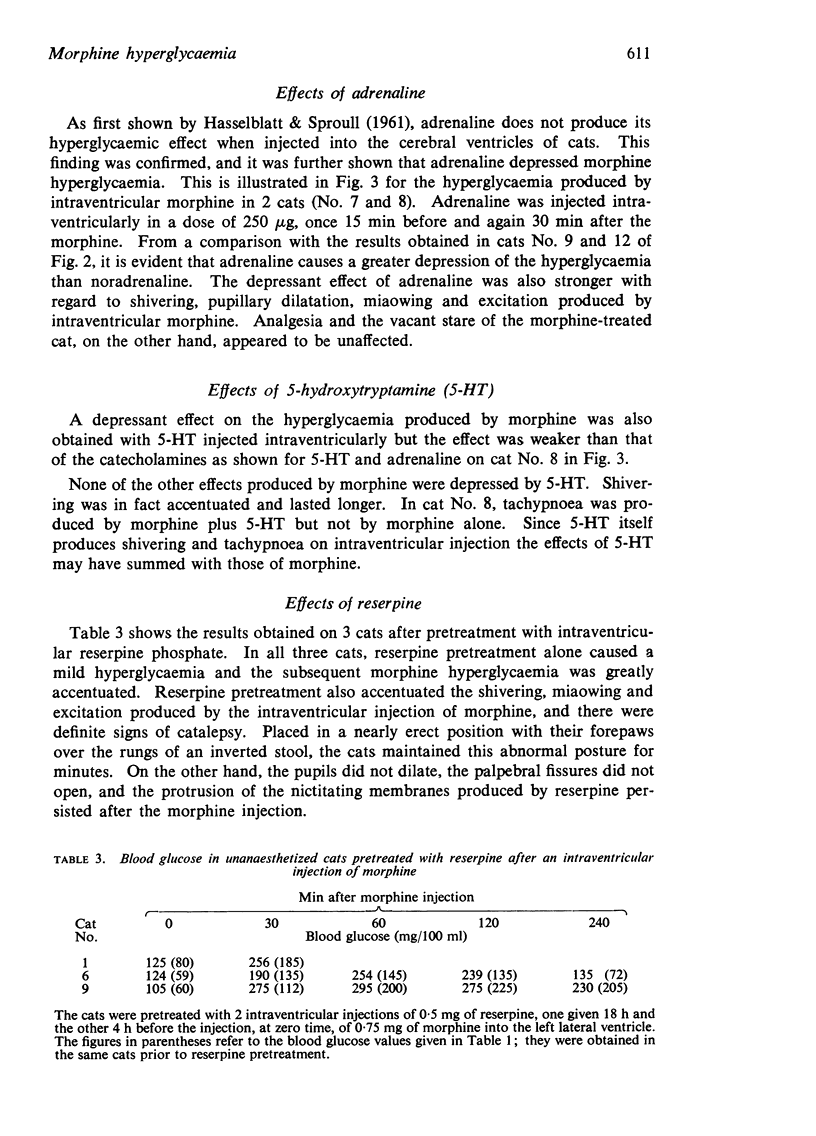
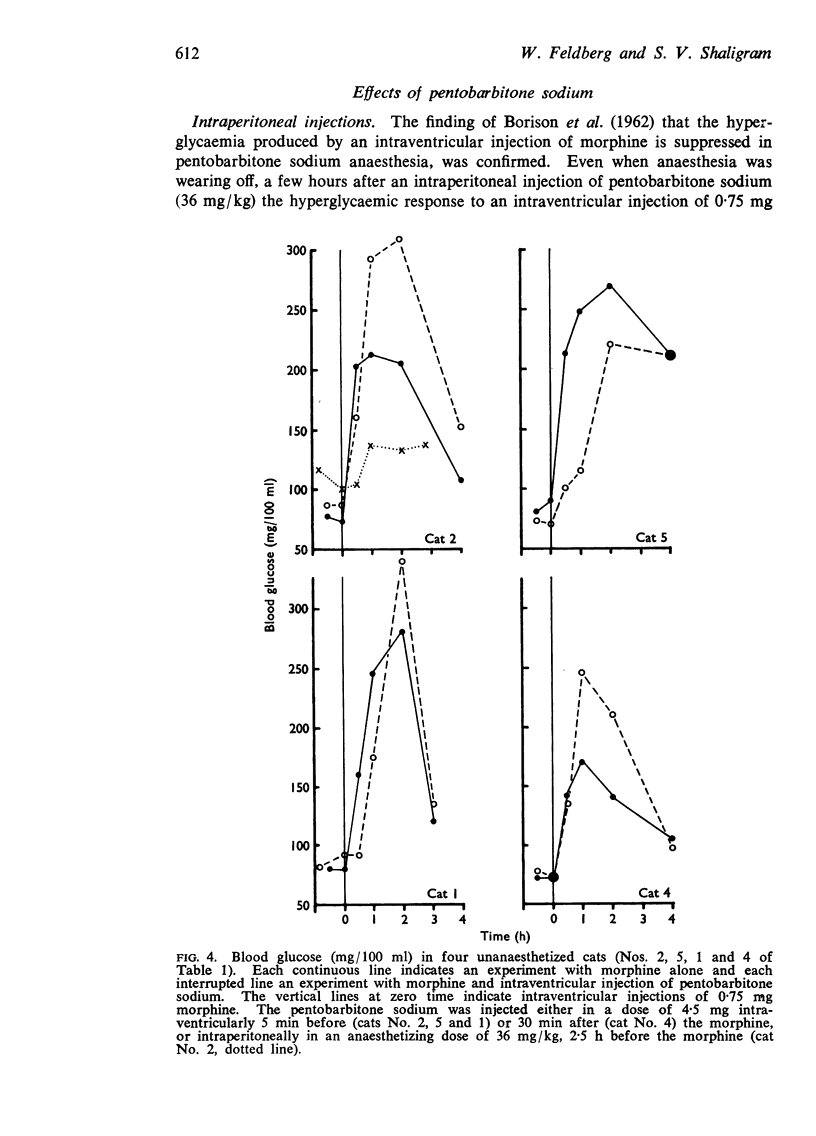
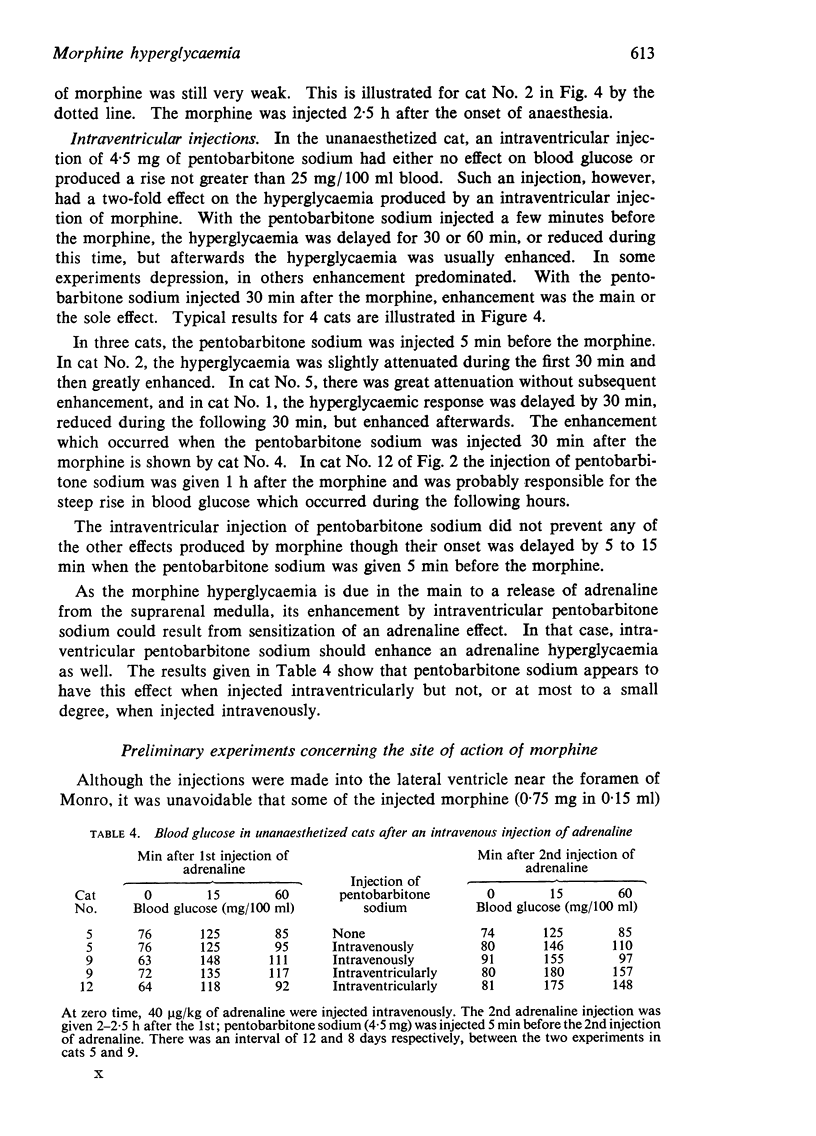
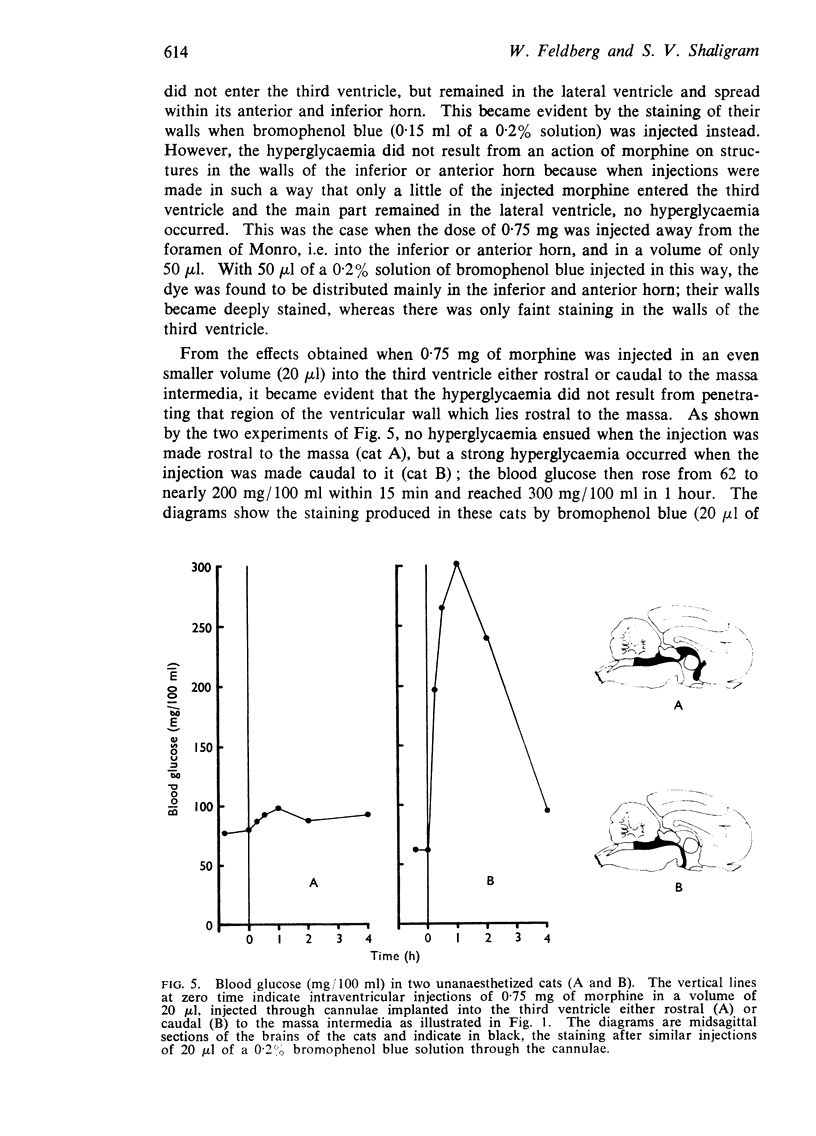
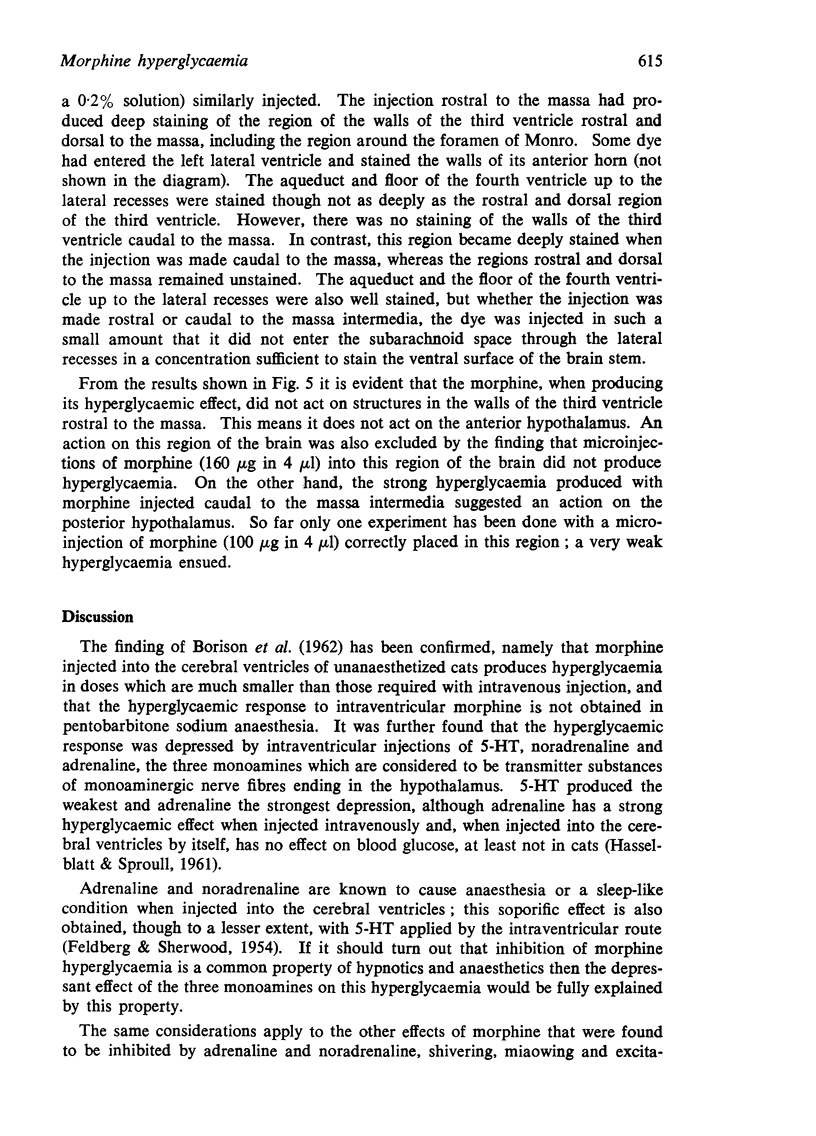


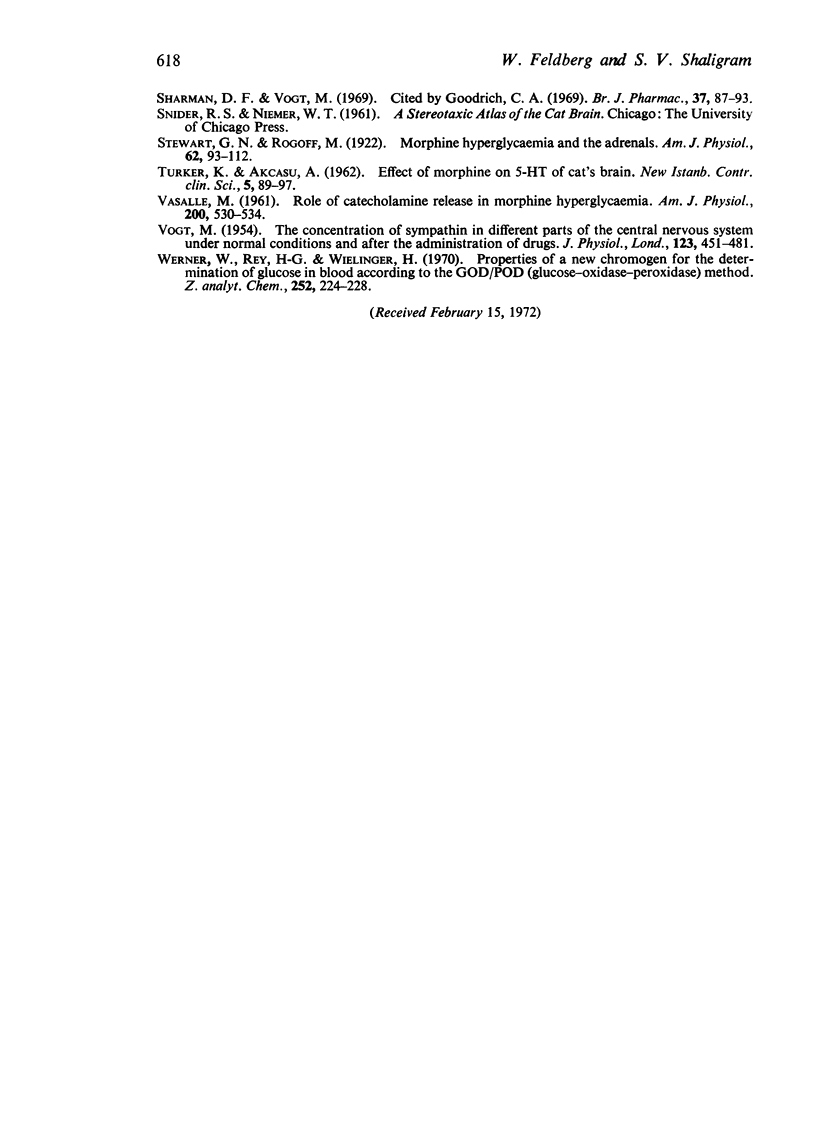
Selected References
These references are in PubMed. This may not be the complete list of references from this article.
- BORISON H. L., FISHBURN B. R., BHIDE N. K., McCARTHY L. E. Morphine-induced hyperglycemia in the cat. J Pharmacol Exp Ther. 1962 Nov;138:229–235. [PubMed] [Google Scholar]
- Banerjee U., Burks T. F., Feldberg W., Goodrich C. A. Temperature effects and catalepsy produced by morphine injected into the cerebral ventricles of rabbits. Br J Pharmacol Chemother. 1968 Jul;33(3):544–551. doi: 10.1111/j.1476-5381.1968.tb00503.x. [DOI] [PMC free article] [PubMed] [Google Scholar]
- Banerjee U., Feldberg W., Lotti V. J. Effect on body temperature of morphine and ergotamine injected into the cerebral ventricles of cats. Br J Pharmacol Chemother. 1968 Mar;32(3):523–538. doi: 10.1111/j.1476-5381.1968.tb00453.x. [DOI] [PMC free article] [PubMed] [Google Scholar]
- Cooper K. E., Cranston W. I., Honour A. J. Observations on the site & mode of action of pyrogens in the rabbit brain. J Physiol. 1967 Jul;191(2):325–337. doi: 10.1113/jphysiol.1967.sp008253. [DOI] [PMC free article] [PubMed] [Google Scholar]
- FELDBERG W., SHERWOOD S. L. Injections of drugs into the lateral ventricle of the cat. J Physiol. 1954 Jan;123(1):148–167. doi: 10.1113/jphysiol.1954.sp005040. [DOI] [PMC free article] [PubMed] [Google Scholar]
- Feldberg W., Guertzenstein P. G. A vasodepressor effect of pentobarbitone sodium. J Physiol. 1972 Jul;224(1):83–103. doi: 10.1113/jphysiol.1972.sp009882. [DOI] [PMC free article] [PubMed] [Google Scholar]
- Feldberg W., Saxena P. N. Fever produced by prostaglandin E1. J Physiol. 1971 Sep;217(3):547–556. doi: 10.1113/jphysiol.1971.sp009585. [DOI] [PMC free article] [PubMed] [Google Scholar]
- Gaitondé B. B., Joglekar S. N., Shaligram S. V. The hyperglycaemic action of sodium salicylate. Br J Pharmacol Chemother. 1967 Aug;30(3):554–560. doi: 10.1111/j.1476-5381.1967.tb02161.x. [DOI] [PMC free article] [PubMed] [Google Scholar]
- Goodrich C. A. Effect of monoamineoxidase inhibitors on 5-hydroxytryptamine output from perfused cerebral ventricles of anaesthetized cats. Br J Pharmacol. 1969 Sep;37(1):87–93. doi: 10.1111/j.1476-5381.1969.tb09525.x. [DOI] [PMC free article] [PubMed] [Google Scholar]
- HASSELBLATT A., SPROULL D. H. Hyperglycaemia induced by drugs. J Physiol. 1961 Jun;157:124–136. doi: 10.1113/jphysiol.1961.sp006710. [DOI] [PMC free article] [PubMed] [Google Scholar]
- HOLZBAUER M., VOGT M. Depression by reserpine of the noradrenaline concentration in the hypothalamus of the cat. J Neurochem. 1956 May;1(1):8–11. doi: 10.1111/j.1471-4159.1956.tb12048.x. [DOI] [PubMed] [Google Scholar]
- Herz A., Albus K., Metys J., Schubert P., Teschemacher H. On the central sites for the antinociceptive action of morphine and fentanyl. Neuropharmacology. 1970 Nov;9(6):539–551. doi: 10.1016/0028-3908(70)90004-3. [DOI] [PubMed] [Google Scholar]
- VASSALLE M. Role of catecholamine release in morphine hyperglycemia. Am J Physiol. 1961 Mar;200:530–534. doi: 10.1152/ajplegacy.1961.200.3.530. [DOI] [PubMed] [Google Scholar]
- VOGT M. The concentration of sympathin in different parts of the central nervous system under normal conditions and after the administration of drugs. J Physiol. 1954 Mar 29;123(3):451–481. doi: 10.1113/jphysiol.1954.sp005064. [DOI] [PMC free article] [PubMed] [Google Scholar]


